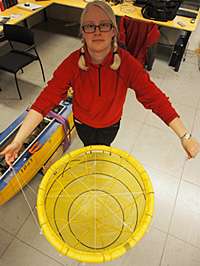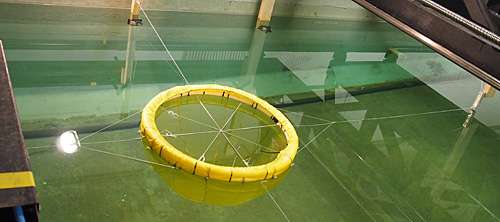Closed fish-farming "bags" must withstand nature's forces

New kinds of aquaculture net cages that physically separate the farmed salmon from the open waters are already in the testing phase. The idea is to prevent the dreaded salmon louse from ever reaching its intended victim by enclosing the fish inside a closed system and pumping in seawater from the depths where salmon lice do not live.
A closed system has the added benefit of enabling fish farmers to better control the salmon's environment and any emissions from production. This is good for the fish and the environment alike.
The flexible, closed net cages currently undergoing testing are basically large bags of GORE-TEX-like material with conventional mooring systems. The researchers are gathering much-needed knowledge about how this new production system will stand up to the forces of the open sea. Graduate engineer Ida Marlen Strand has made this the topic of her doctoral degree at the Norwegian University of Science and Technology (NTNU).
"Currents and waves will have a different impact on these closed-system bags since they are less permeable than conventional, open aquaculture net cages," she says.
Unexpected findings
The design of a submerged, flexible structure is critical to prevent its collapse from the ocean's strong forces. One tactic tested was to fill the bag only partially, based on the thinking that its greater flexibility would reduce the current's effect. But experiments towing a partially filled plastic-bag model through water surprised the researchers.
"The experiments showed precisely the opposite of what we had expected," says Ms Strand. "The current's forces can actually be multiplied several times over when we reduce the filling level."

Testing alternatives
The bag's geometry turns out to be crucial. Up to now its shape has basically been that of a conventional aquaculture net cage. But a current will deform such a bag, creating even more hydrodynamic drag.
"To try and counteract this deformation," continues the engineer, "we have carried out trials with reinforced bags. This yielded some positive results, but also new surprises and challenges. We still have a long way to go until we have a reliable enough model for calculating all the forces on these new bags."
Provided by The Research Council of Norway





















